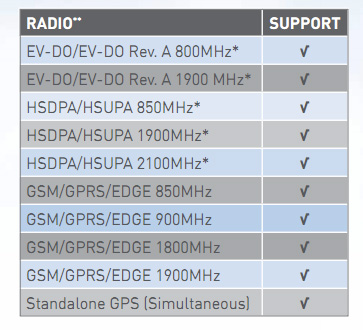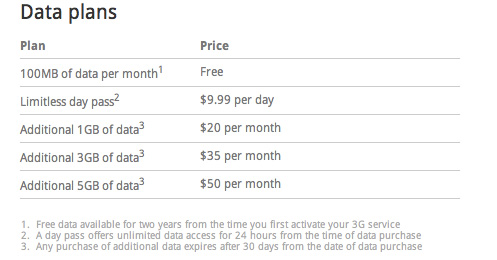Anand's Thoughts on Google's Chrome OS
by Anand Lal Shimpi on December 8, 2010 6:23 PM ESTConnectivity Brilliance: Free Cellular Data with Every Chrome Notebook
Chrome OS relies on you using a web browser for all of your PC usage and as a result, is more dependent on internet access. Thankfully the smartphone revolution has positively impacted wireless data availability and Google is capitalizing on that.
All Chrome OS systems will offer both WiFi and cellular data connections. Initial Chrome hardware will feature Qualcomm’s Gobi modem which supports the following networks:

Gobi also provides GPS so you get the same sort of data access and connectivity that you would on a smartphone. To be honest it’s a shame that all existing notebook manufacturers don’t provided this sort of access. I’d hope that availability of Chrome notebooks would change this for everyone.
In addition, Google extended its already far-too-cozy partnership with Verizon to enable a pretty sweet deal for Chrome notebook users. For the first two years of ownership, once you activate 3G service, you’ll get 100MB of free data transfers every month with your Chrome notebook. If you’re mostly using the web in locations where you have WiFi and just need to rely on 3G occasionally, this may actually be enough to get you by.
Verizon will also offer unlimited data $9.99 day passes with no recurring billing/contract required. If you want more monthly data the pricing is as follows:

I have to say that Google and Verizon’s proposed data plans are probably the most reasonable I’ve seen from anyone. If the pricing on Chrome notebooks is right, the free 100MB/month of 3G transfers will be a major selling point for casual users.










104 Comments
View All Comments
tipoo - Wednesday, December 8, 2010 - link
Yeah, its just a prototype to test the OS but I really wish manufacturers used this kind of design more often! No logos, no curves, no patters, no glossy black plastic, nothing but what matters.tipoo - Wednesday, December 8, 2010 - link
*patternsyzkbug - Wednesday, December 8, 2010 - link
Looks like a lot of us here share the same vision of how notebooks should be designed. Here is an idea. Let’s start an open-hardware project (analogous to an open-source project) defining what our notebook should be (high quality LCD, no 16:9 screen, no gloss, thin bezel, no-flex keyboard, etc.) May be one day, a notebook manufacturer will hear us and turn it into a real product. Anand, do you want to drive this? ;)Dug - Thursday, December 9, 2010 - link
Hear hear!It seems so obvious, but good ol stupid marketing and project managers can't get it through their thick heads to listen to customers.
vol7ron - Tuesday, December 14, 2010 - link
Perhaps your wants aren't what the majority of people want; and since price is based off supply, demand, and cost, perhaps they really don't want to lose.When you start specializing, you lose an economy to scale. There are higher manufacturing costs, which means it'd cost more for the rest of the people, which equals less sales, which equals less profits. This is one of the reasons why the Dell manufacturing process was so successful; they used only a couple of base models so that prices would not be as high.
But I agree, having some variance in design would be nice. I would not call it "open-hardware", I'd call it "open-design", which could encompass hardware as well as software.
Computer Bottleneck - Thursday, December 9, 2010 - link
I like that idea, but what platform/OS would that go best with?mrBug - Sunday, December 12, 2010 - link
AROS !!!!!!!!!!!!!!gr00 - Friday, January 14, 2011 - link
I wouldn't call it open hardware because open-source hardware already exists, more like "sensible notebook design initiative". Definitely agree on "no 16:9 screen, no gloss", many of those are just standards that I hope will come to pass.GullLars - Thursday, December 9, 2010 - link
I liked the design, with exception of connectivity options (seriously 1 USB, and no external storage?), but the name is not thought through.The reference platform is called Cr-48, which is a very unstable radioactive isotope (λ < 24 hours) of the element Chrome (nr 24 in the periodic table)... Cr-52 is the most abuntant stable isotope, and would make a better name for a computer...
tipoo - Thursday, December 9, 2010 - link
Nah. This is a public beta of sorts, its going to be buggy. Naming it after the stable molecule of Chrome would ruin its name, naming it after an unstable isotope with a short half-life makes sense for this :)